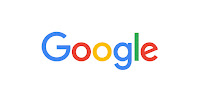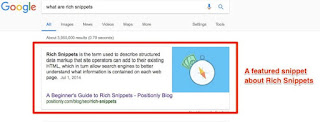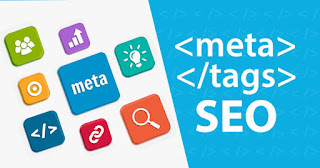History and Evolution of SEO
Google is a search engine established in 1998 by Larry Page and Sergey Brin. Google specializes in Internet-related services and products, which include online advertising technologies, search engine, cloud computing, software, and hardware.
Google mainly performs three operations crawling, caching and indexing.
 Crawling
Crawling is performed by web crawlers, they are programs for crawl web pages, that is scanning the information from a website. This web crawlers are also known as
Google bots,
spiders, etc...
Caching is the process of saving data on web pages. This process involves, taking snapshots of the web page and save it on the database in a categorized manner.
Indexing is the process of forming indexes for the web pages.
Sometimes these operations may misunderstand the actual meaning of web pages. It will result in incorrect information storing. The incorrect information stored on database produces irrelevant results for the user while searching.
On-page optimization is performed by webmasters. On-page optimization involves modification or editing done inside a web page. Webmasters have the user id and password for controlling the websites. Webmasters perform on-page optimization and make the website easily understandable to google.
During the time of world trade center attack, a large number of users search about world trade center. But at that time google failed to provide results to the users. This was seriously discussed by the google company and arrived at a solution. The solution was, release the guidelines of google to the webmasters for maintaining the website. Many of the members of google were against that decision. Because it will affect the security and secrecy of google, but google took that risk. This released guideline is known as an SEO starter guide.
Search engine optimization (SEO) is the process of increasing the quality and quantity of website traffic by increasing visibility of a website or a web page to users of a web search engine.
After that, low-quality results are seen on google. Low-quality results mean it doesn't provide the actual information needed by the user.
So Google introduced content specific ranking to the websites. The content-specific ranking is performed according to the number of times the focusing keyword is present on a web page. A Website with a maximum number of focusing keyword is ranked as first. A focusing keyword is a keyword or term searched by the user. But many websites followed keyword stuffing. It is the process of increasing the presence of focusing keyword on the website. It comes under the Blackhat technique. SEO techniques are divided into Blackhat and Whitehat techniques. Whitehat is related to ethical ways of SEO techniques and Blackhat is related to unethical ways.

Then Google introduced ranking according to the
link. Links are recommendations or pointers given by one or more websites to pointing any specific website. And ranking is given according to the websites having recommendations from a maximum number of websites. This results in the selling and buying of links without google's control. So
Google introduced another ranking method, quality link specific. It is according to the links or recommendations from high-quality websites. Here google used a scaling factor for ranking web page that is
page rank. Page rank is taken as out of 10. This page ranking technique was stopped in 2016. There were fewer websites have the page rank 10 out of 10.Page rank is given by Google, according to the use of the website for the users. Twitter is an example for a website with page rank 10 out of 10. When a website is giving links to a large number of websites, it will decrease the page rank of that website. This process is known as
passing the juice. But we can prevent the loss of rank by using 'no follow' link. By using 'no follow' link the website did not share its rank to the other websites.
Google Adwords is an advertisement program. The function of this program is posting advertisements on websites. The client pays money for posting their advertisements. So it played a main role in increasing the income of google. Now, Google AdWords is known as google ads.
The user can easily customize their ads according to their need. The clients paid amount will decrease according to the
CPC,
Cost per Click. When the user visited the site by clicking the ad and leaving the site without purchasing will google decrease the amount paid to google for posting the advertisement. Google takes the cost for each visiting without purchasing. When the amount is exhausted, then the advertisement will be removed by
google. After that, Google AdSense is introduced. It is for making earnings from google. We can post other advertisements on our website and the google gives a commission for the clicks on the advertisement.
Web Spam Quality Team is introduced by google to find out spams and make strong updation for the corresponding problem.
Google suggest is for helping the users while typing a term for searching. Google automatically shows some related terms and recent searches.
In 2009, website ranking in Google is based on user interactions. In this method google analyze the interaction time of each user on the website. The website with more interaction time will be ranked first.
Bounce rate is the percentage of users with very low interaction, that is quick exiting from the website. A website with low ranking has a high bounce rate.
Pogo sticking is a process of changing the rank of the first website to low and increasing the rank of the second website and make it as ranked first, according to the bounce rate.
In 2010, social media got a high degree of user interactions. Users spend more time on social media websites.
Google Algorithm Updates
Panda Update
In 2011, google performed an updation known as google Panda updation. This updation was against content specific spamming. There are different types of content spamming,
- Duplicate Content: Copying contents that are published by others.
- Low-Quality Publication: Information with grammatical errors.
- Content Spinning: Using the same lines or content in different paragraphs.
- Thinny pages: Web pages with fewer contents and information.
- Keyword Stuffing: Increasing the use of focusing keyword on the website in an uncontrolled manner.
Panda 4.0 version is the most successful panda update. It was introduced in May 2014. This updation removed lakhs of low-quality websites. And this updation implemented as a permanent filter in the Google algorithm. All the websites are passed through this filter before storing to the database. So it stores only quality websites.
Penguin Update
Penguin is another update from google in 2012. It is against
link specific spamming. There are some link specific spamming,

- Paid links: Buying and selling of links for increasing the website rank.
- Low-Quality link: Links given by low-quality websites.
- Link Exchange: Giving and taking links between two websites for increasing rank of both of the websites.
- Link farming: Creating a large number of links by any link schemes or automatic link building. It is similar to link exchange.
- Comment spamming: Attaching links along with the comments on the comment box.
- Wiki spamming: Posting links in the wiki pages.
- Uncontrolled guest blogging: Guest to a website post links and articles in that website in an uncontrolled manner.

Pigeon Update
- It was another update from google. It is related to local SEO, that is targeting on local customers.
- Local SEO makes the website locally visible.
Hummingbird Update
In 2013 google introduced another update known as a Hummingbird.
This update provided semantic search results, that is providing deep information and interactive results.
Rank Brain Update
It was another update of google in 2015. It is related to artificial intelligence for identifying the actual need of the user. That is, analyze the search term and give accurate results.
Mobile Geddon Update
It was another update in which ranking is done according to the mobile-friendly nature of the website.
There are some features for a mobile-friendly website,
- The website must not contain unplayable contents
- Only Horizontal scrolling is allowed
Parked Domain Update
It is mainly focused on hiding the booked domains. Booked domains are domains which are pre-registered by any company or person. It is hidden because it is pre-registered only, no content is published in it.
Pirate update

It is another
update, that is mainly for taking action when any copyright complaint is submitted to google by a website owner. This update is for stopping piracy. The website owner submits a complaint when any content of their website is copied by another website. The complaint is known as the
Digital Millenium Copyright Act (DMCA).
Exact Match Domain (EMD) Update
EMD is another update from Google. This update is for identifying and removing poor quality website with focusing keyword as a domain. Otherwise, the poor quality website with search term as domain name gets ranked high.
Bracket Update
This was introduced in 2017. It is to stop review manipulations.
Medic Update
It is targetted on health and wellness related websites. It is an update based on the value of the website.

























